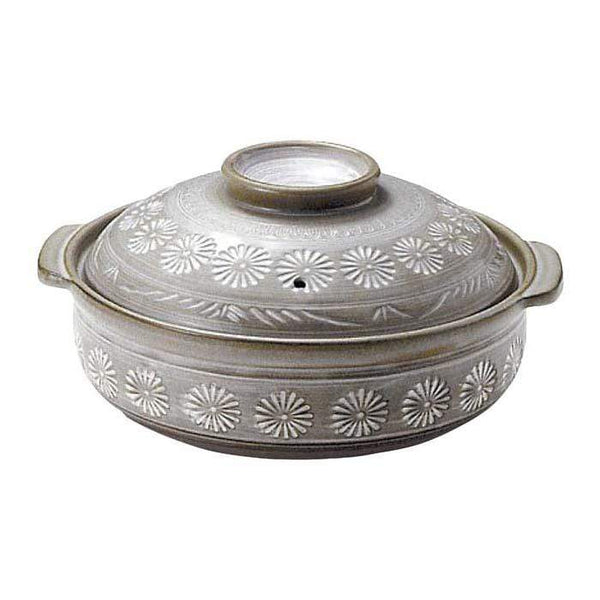The product we used:
Donabe: The Engine of a Traditional Japanese Kitchen
Japanese grandmas are the vanguard of the traditional Japanese cooking corps. They are the inheritors of the oldest and most sacred recipes handed down from mother to daughter since the Yayoi Period. While you were merely a glimmer in your father's eyes, your Japanese grandmother-in-law was cooking oden while dodging swinging samurai swords. While you studied your multiplication tables and cursive writing, she was studying how to make a zoni worthy of Tokugawa Iyeyasu himself (perhaps in an attempt to assassinate him via mochi balls).
The engine powering every traditional Japanese food fit for winter is grandma's donabe--her clay pot.
Okowa: Okowa is a type of rice dish made by steaming rice in a donabe and adding various ingredients and seasonings.
Zoni: Zoni is a soup eaten during the New Year's season, consisting of mochi and vegetables.
Nabemono: Nabemono refers to hot pot dishes such as shabu-shabu, sukiyaki, and chanko-nabe. These hot pot dishes are delicious when prepared in a donabe.
Takikomi Gohan: Takikomi gohan is a dish where vegetables and meat are cooked together with rice in a donabe, resulting in a rich and flavorful rice dish.
Osui Mono: Osui mono is a Japanese soup dish made by taking a broth and adding ingredients. When cooked in a donabe, the flavor is enhanced.
Oden: Oden is a traditional Japanese winter dish consisting of simmered daikon radish, konjac, eggs, and other ingredients in a broth.
Nimono: Nimono is a dish where meat and vegetables are simmered in a broth. When slowly cooked in a donabe, the flavors are absorbed, making it delicious.
If you purchased a Ginpo Mishima Induction Donabe Casserole from Globalkitchen Japan and wish to harness it's delicious powers using grandma's recipes, you need to prepare it before you use it for the first time.
You Gotta Medome Your Donabe

The process of preparing your donabe for first-use is called "medome". Clay pots are very porous. All those little holes in the clay making it very absorbant. Absorbed material can cause molding or bad odors and flavors to leak into your food.
The good news is, you can clog those pores though the process of medome. Here's how you do it.
1. Clean Donabe and Then Boil Water



Clean the inside of the donabe and then fill it up half-way with water. Set to high heat and bring to a hard boil.
2. Add Flour and Mix


Once the water has boiled, set heat to low. Mix flour (about 2-3 tablespoons) into a bit of water, then add the mixture to the hot water in the donabe. Stir until completely mixed.
3. Heat Then Set to Cool

Leave the mixture on low heat for 5 minutes, then take it off the heat and let it sit to cool.
4. Clean and Dry

Once the water in the pot has cooled, wash out the donabe and set it to dry thoroughly before your first use.
With just that little bit of setup, you're ready to begin the journey that billions of grandmas have taken before you.
Tips
- Clean your donabe by hand. Don't clean your donabe in the dishwasher.
- Don't soak it in water, and let it dry thoroughly after every use.
- We recommend cooking lightly flavored food (like sukiyaki or takikomi gohan) 5 or so times before cooking more heavily flavored food (like oden or nimono).
- For the first 5 uses, don't leave food to set in it for long periods of time.
- Don't store food in your donabe.
- The Ginpo Mishima Induction Donabe Casserole can be used over direct heat or with an induction stove. If you use it with an induction stove, make sure to insert the metal plate included with the donabe.
Welcome to Grandma's Millions
With that, you are ready to join the army of Japanese grandmas fighting in the trenches to make every donabe meal worthing of the grandmas that came before.





